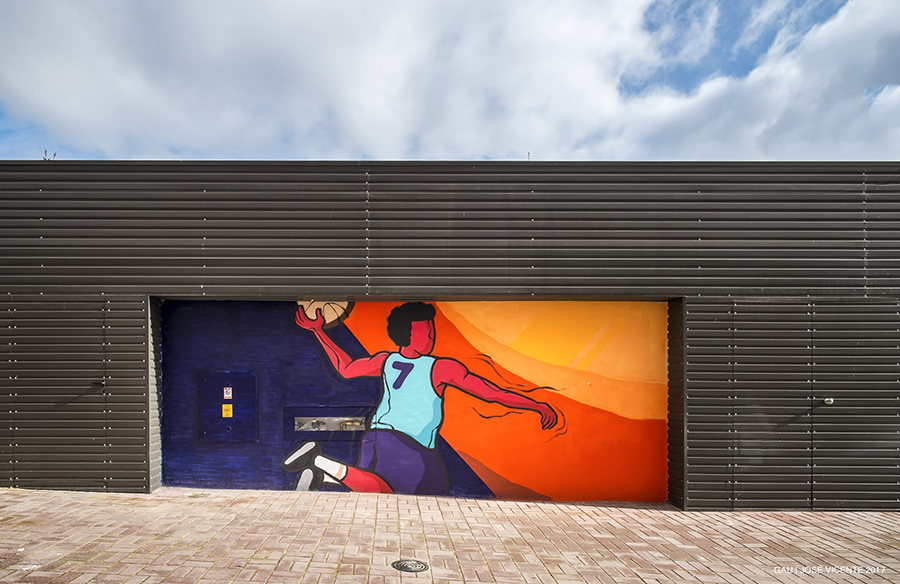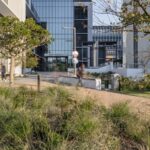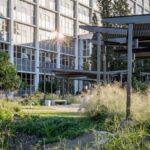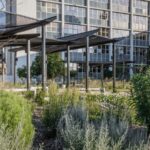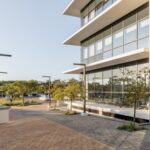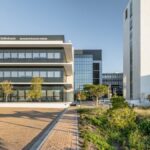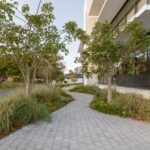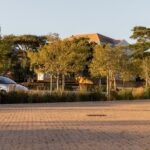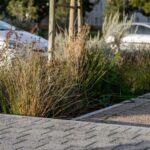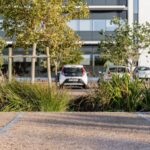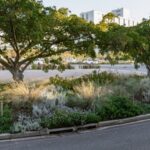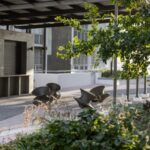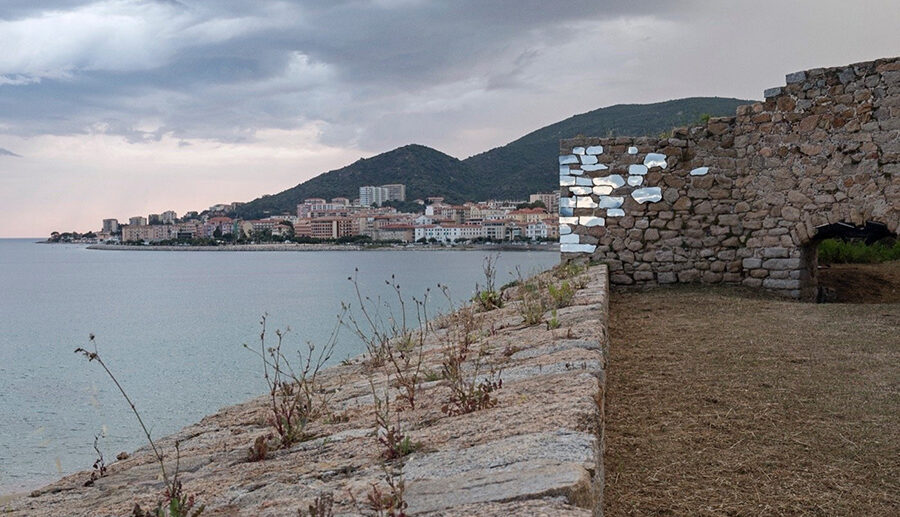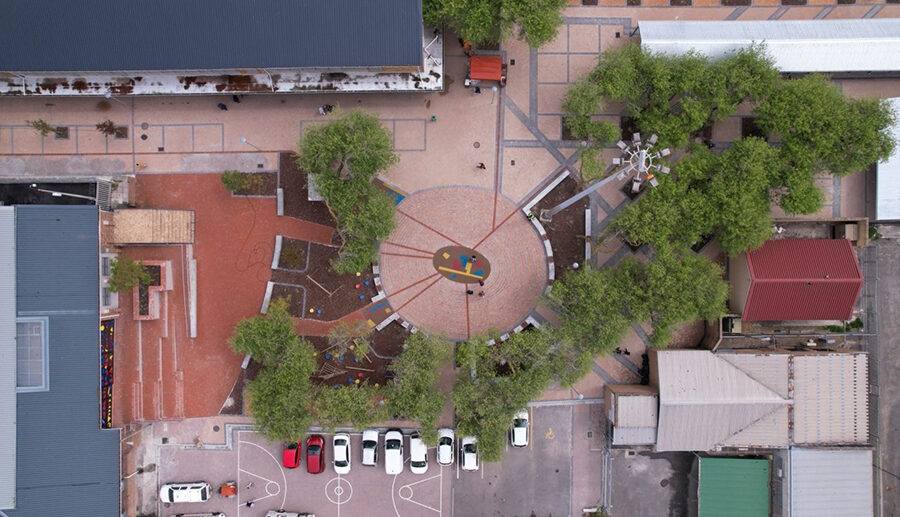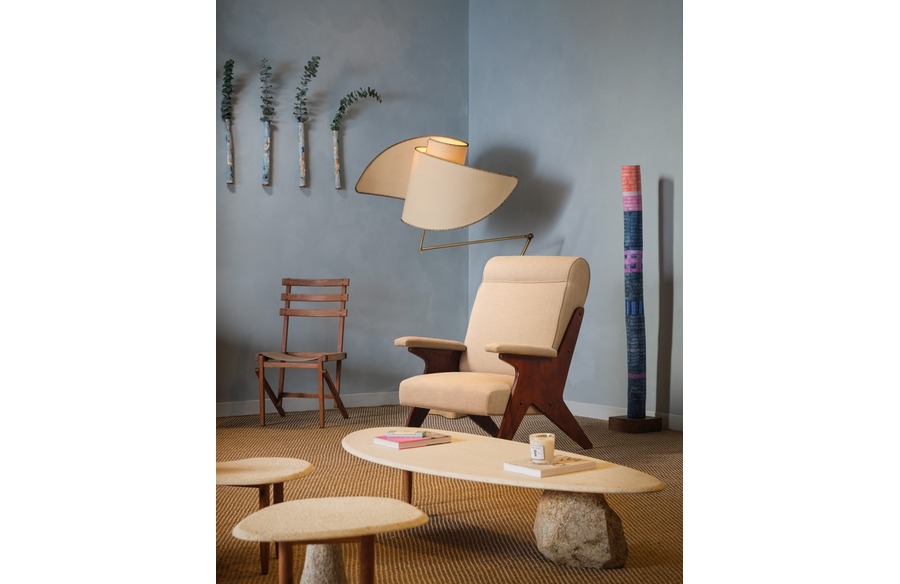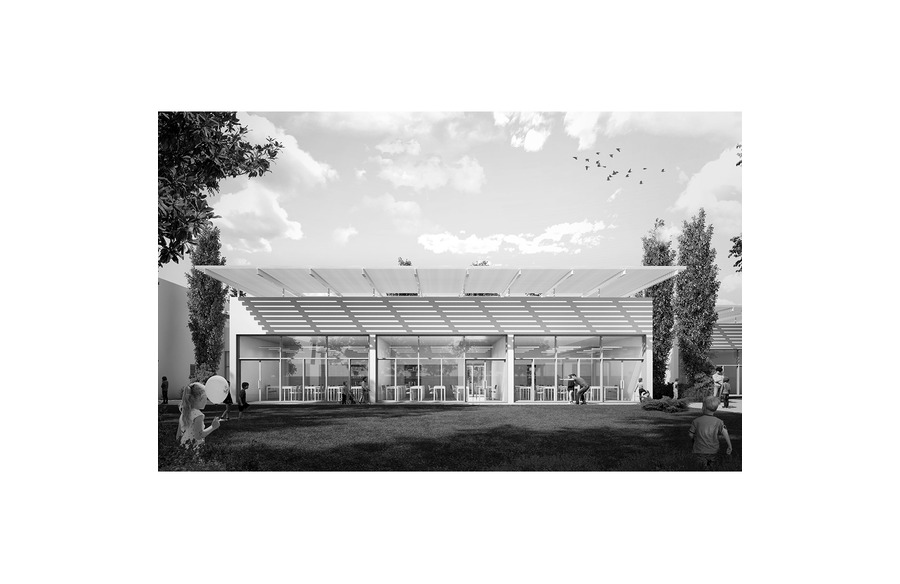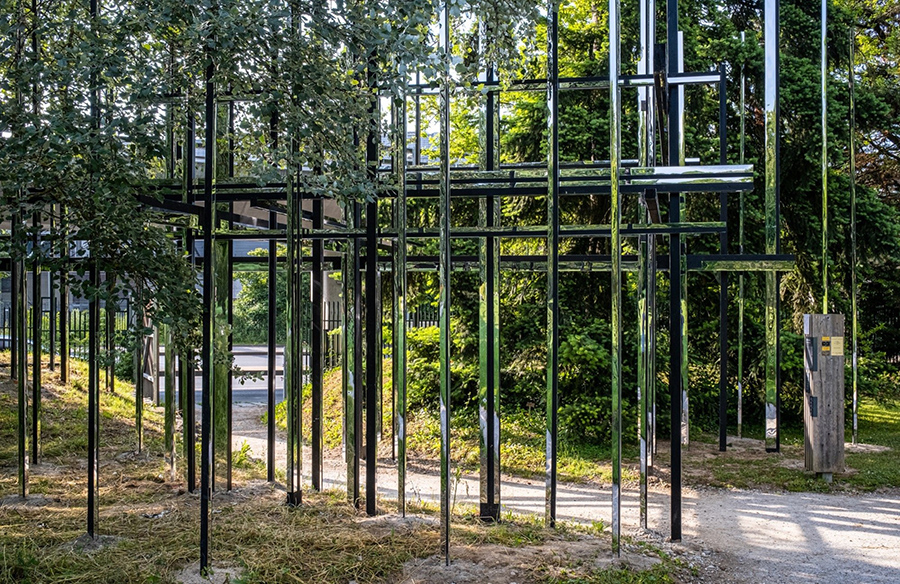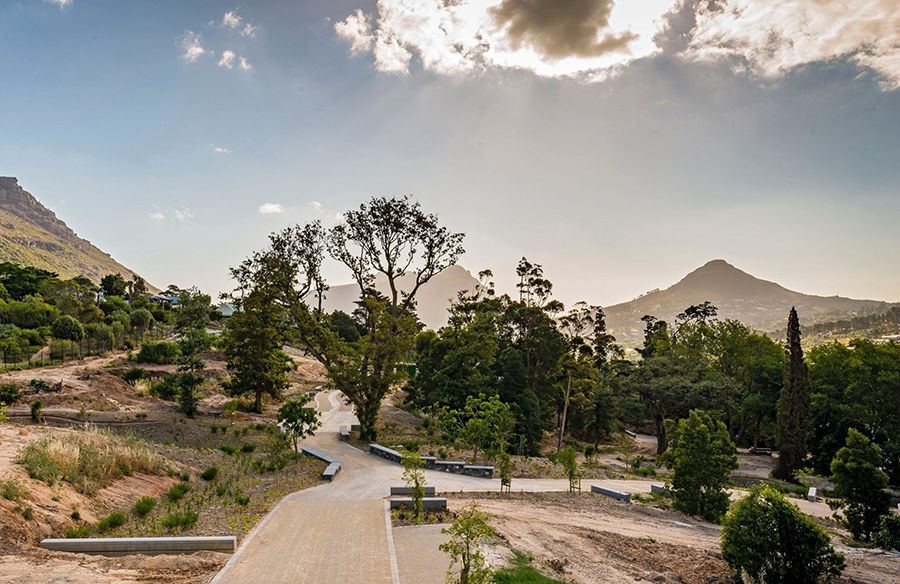Crafting a Modern Landscape BMRI Biomedical Research Institute

Harmonizing with Architectural Design
The landscape architecture vision for the BMRI Biomedical Research Institute aimed to complement the contemporary building design by Roelof Rabe Argitekte. The goal was to create outdoor spaces that offer a serene retreat from the bustling campus environment while seamlessly integrating with the new building’s aesthetics.

Fostering Social Interaction
Recognizing the significance of outdoor spaces as hubs for social interaction, the design prioritized the creation of welcoming areas where students and visitors could gather, relax, and engage with one another. From the East and West entrances to the dean’s garden and courtyard, every space was meticulously crafted to promote positive outdoor experiences for all, including the campus chickens.
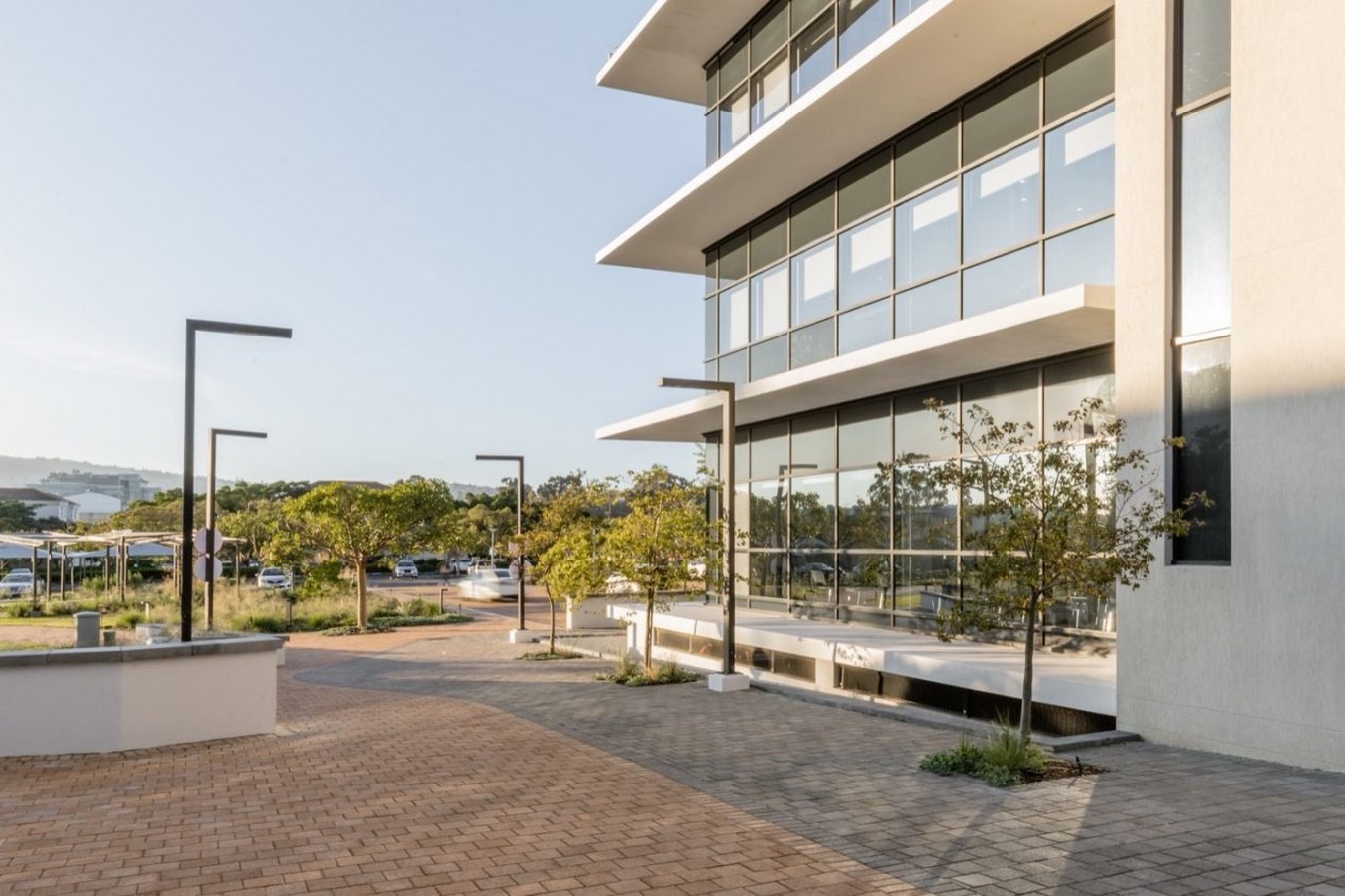
Design Elements and Focus Areas
Terra+ Landscape Architects spearheaded the design process, focusing on key areas such as the entrance zones, park, atrium, and parking lot. Their responsibility encompassed not only the spatial layout but also the intricate detailing of hard landscaping elements like pergolas and paving, ensuring a cohesive and visually appealing environment.
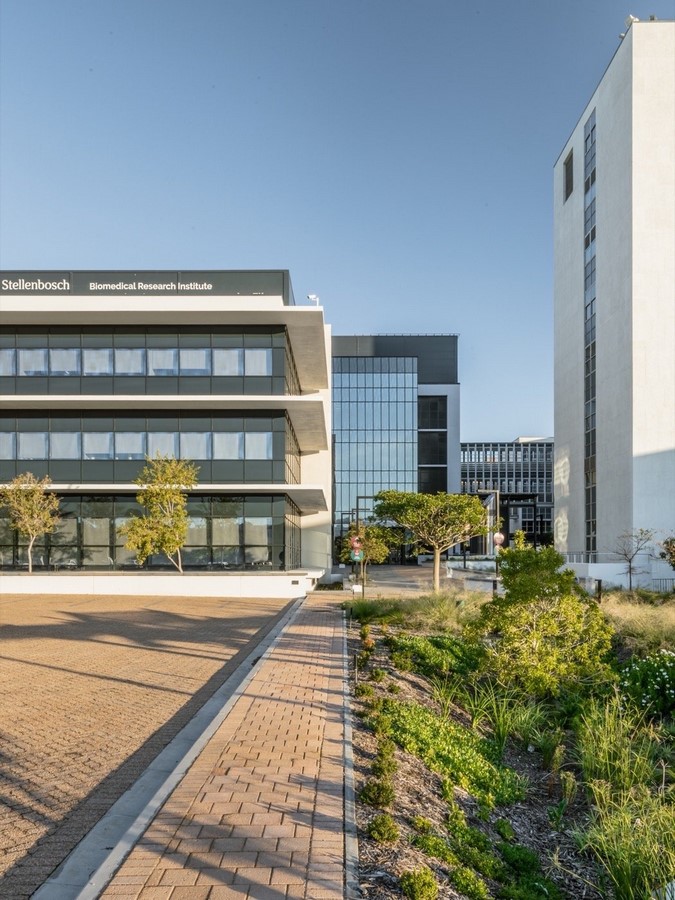
Blurring Boundaries: Indoor-Outdoor Connection
Throughout the design journey, emphasis was placed on blurring the boundaries between indoor and outdoor spaces. Paving patterns outside echoed those found within the building’s atrium, reinforcing a seamless transition between the two realms. Thoughtful selection of trees for the atrium further enhanced human comfort and engagement with nature.

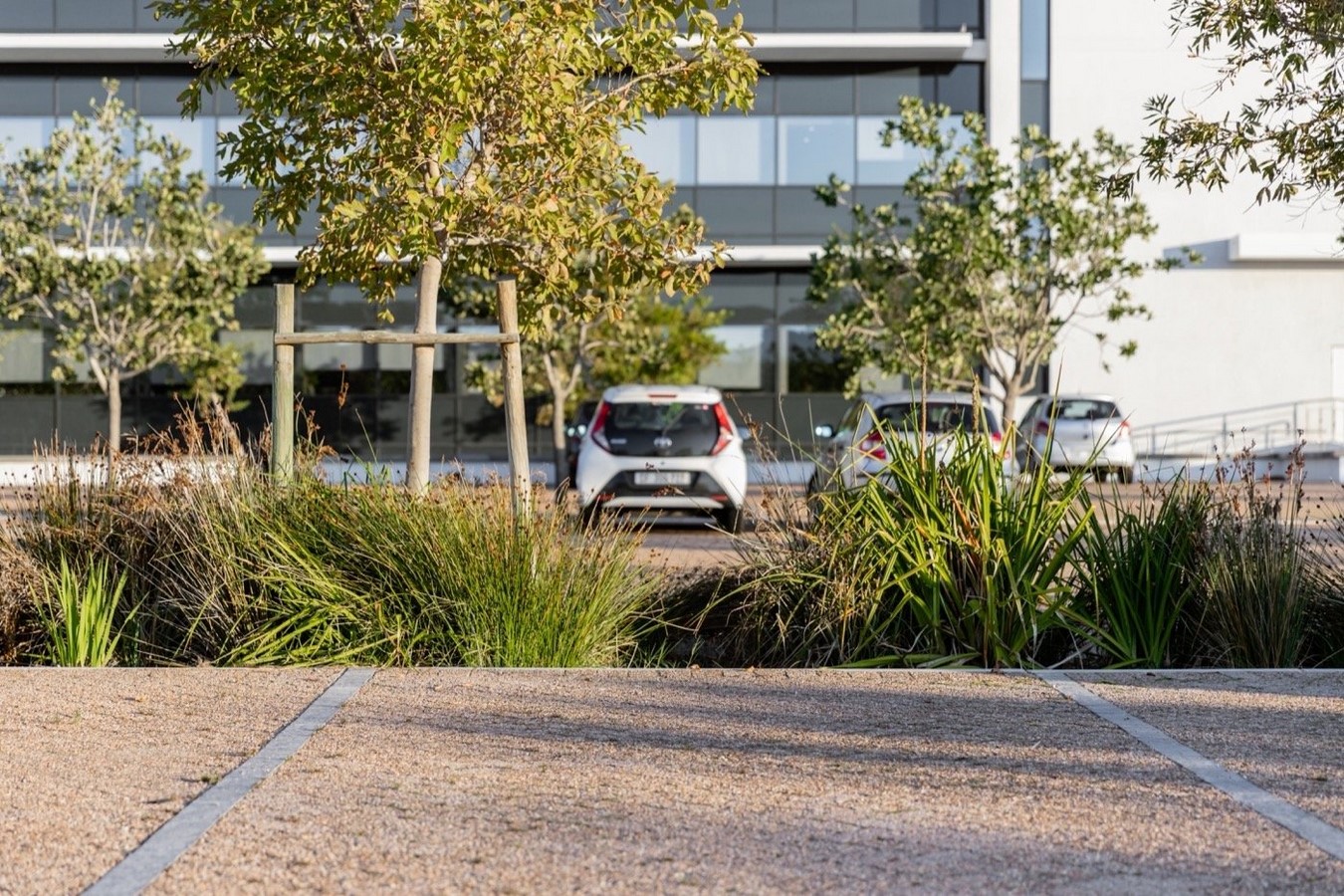
Embracing Indigenous Flora
The planting palette was meticulously curated, drawing inspiration from endemic species and the indigenous flora of the Western Cape’s fynbos floral kingdom. This deliberate choice not only celebrates the region’s biodiversity but also ensures seasonal variation and resilience to climatic changes, contributing to a strong sense of place and identity. Moreover, the selection of water-wise plants aligns with sustainable practices tailored to the local context.


